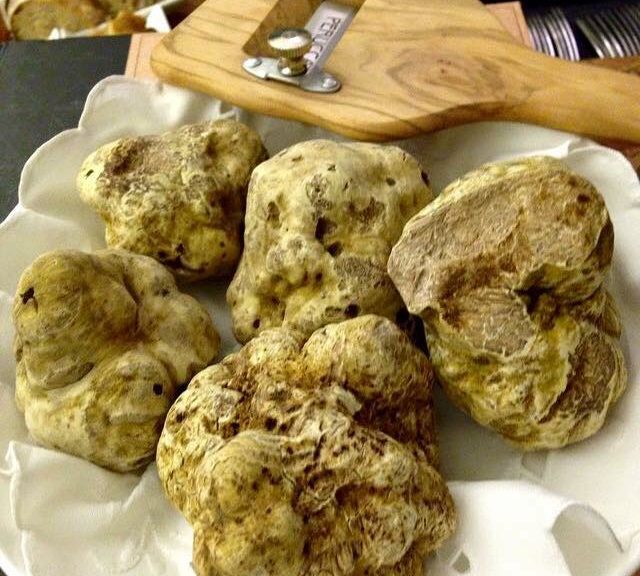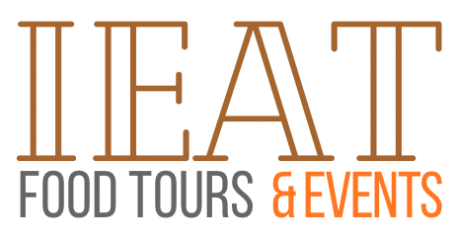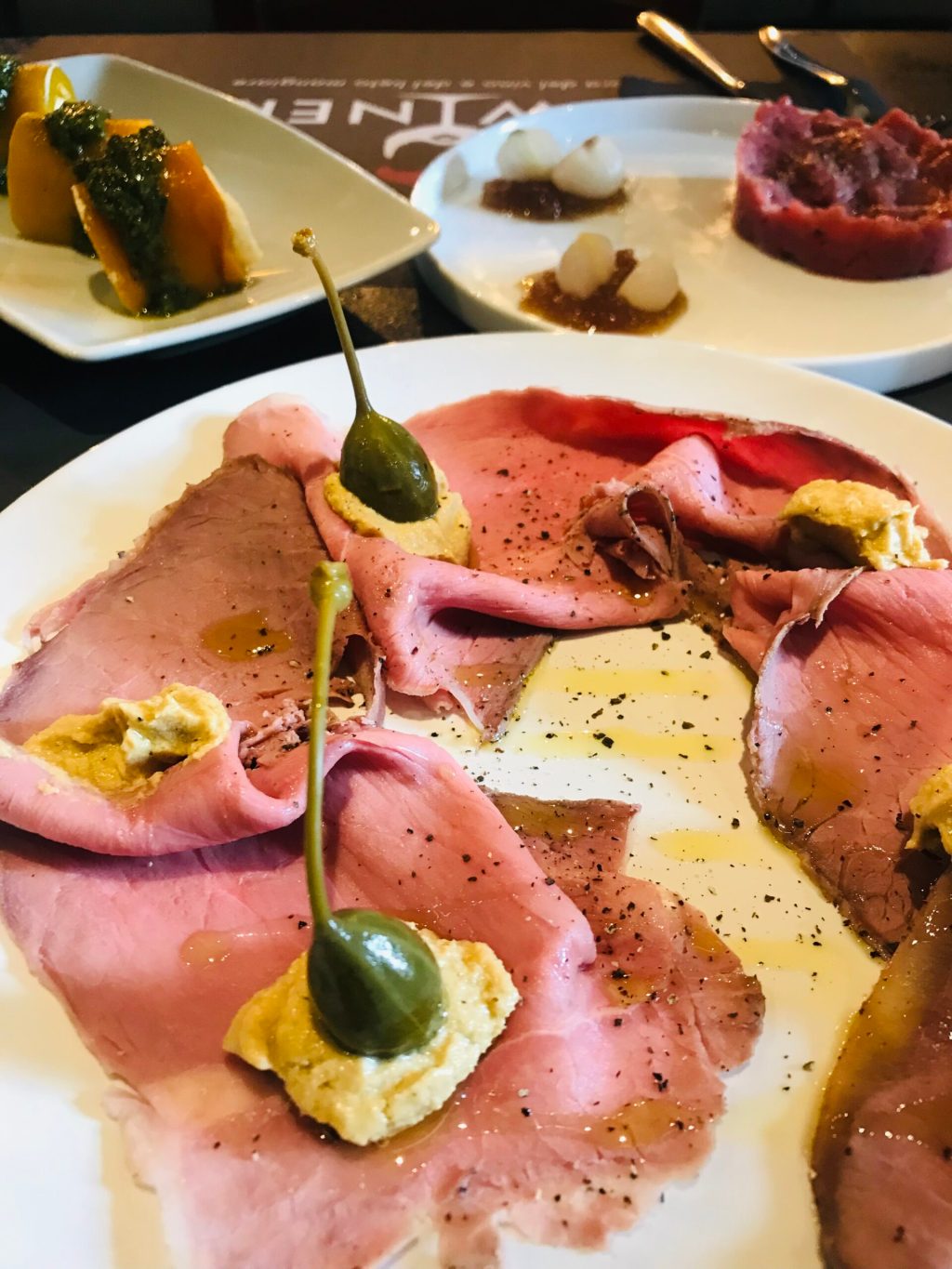TURIN’S FOOD SCENE. FREQUENTLY ASKED QUESTIONS
Turin’s Food Scene Unveiled: Frequently Asked Questions for Travelers
Welcome to Turin, a city where culinary delights and rich traditions blend to create an unforgettable gastronomic experience.
In this blog post, we’ll delve into the frequently asked questions that travelers often have about Turin’s vibrant food scene.
Whether you’re a seasoned foodie or a curious explorer, get ready to uncover the secrets of Turin’s culinary world with me.
My name is Cecilia and I am a proud Turin’s food ambassador. Moreover, I’m the co-founder of I EAT. Food Tours & Events: a husband & wife business located in the charming city of Turin.
But now… let’s explore together the most popular FAQ’s about the culinary scene of the former Italian capital.
1. What makes Turin’s food scene unique?
Turin stands out for its diverse culinary heritage, blending influences from the surrounding Piedmont region but also from the marittime alps of Liguria region. Without forgetting the French influence, too. Due to its geographical proximity.
Piedmontese Menu is characterised by its emphasis on starters (antipasti) which often rival main courses in both flavours and complexity. As a matter of fact, Piedmontese antipasti really set the stage for a memorable culinary discovery!
Another hallmark of Piedmontese cuisine is its vast and precious tradition of fresh egg pasta, filled with rich, distinctive fillings (from roasted meats, to cheese and truffle…).
Additionally, Piedmont is well known for its raw meat preparations, particulary Fassona tartare, made from the prized Fassona Beef.
This dish highlights the region’s dedication to quality and semplicity.
Served raw and often seasoned with evo and hazelnuts, Piedmontese tartare offers a truly authentic taste of Piedmont.
Although we do not want to forget the vast selection of vegetarian options!
Like the iconic grilled bell peppers dressed with the typical, vibrant ‘salsa verde’ – green sauce of parsly, anchovies, garlic, vinegar and evo.
2. What are the must-try dishes in Turin?

Agnolotti del plin, a must try pasta magic dish from Monferrato, Piedmont, Italy.
Turin, the capital of Italy’s Piedmont region, offers a delightful array of culinary delights, as mentioned above.
Some must-try dishes include:
–Agnolotti del Plin: These are small, filled pasta pockets typically filled with meat or vegetables, often served with a butter and sage sauce or meat broth. The picture above comes straight from our curated StreetFood Food Tour d’luxe. Best selling in Torino with over 300 5 star reviews.
–Bagna Cauda: A warm dip made with garlic, anchovies, olive oil, and sometimes butter, served with raw or cooked vegetables.
–Tajarin: Thin, hand-cut egg pasta similar to tagliatelle, often served with rich sauces such as ragù or truffle.
–Fritto Misto alla Piemontese: A mix of fried meats and vegetables, such as veal, chicken, and vegetables like zucchini and eggplant.
–Bollito Misto: A traditional Piedmontese dish of boiled meats (usually beef, veal, chicken, and sometimes pork) served with a variety of sauces like green sauce (salsa verde) or horseradish sauce.
–Grissini: Thin, crispy breadsticks originating from Turin, often served as an appetizer or with antipasti.
–Piedmontese cheeses: Try local cheeses like Toma, Castelmagno, or Bra Duro, often served with honey or fruit preserves.
–Gianduja: A delicious chocolate hazelnut spread originating from Turin, which you can find in various forms including chocolates, spreads, and gelato. If you want to delve deep into the chocolate multiverse made in Torino, through an authentic and delicious experience that goes beyond the ordinary, you are so very welcome to join us and embark on our Chocolate & Sweets Tour. Another top rated exclusive experience, that has been made chocolate and dessert enthusiasts alike very happy ever since 2018.
Don’t forget to pair these dishes with Piedmont’s red wines to enhance your culinary experience!
3. What’s the best time to go for lunch and dinner?

Food tours to make you happy. Turin food tours with I EAT. Food Tours
In Turin, food is a cherished tradition, and understanding local dining habits enhances your culinary experience. Italians typically have lunch around 1-2 pm, and dinner around 8-9 pm.
Although in the country of The Dolce Vita is always food ‘o clock!
Therefore, when in Turin, get ready to plan your activities around at least 5 food round. Breakfast-Lunch-Merenda (sweet afternoon snack)Aperitivo-Dinner.
Oh, one more. Please, be awere that in Turin Restaurants close for siesta at 3 pm, to reopen again at 7.30 pm. If you go for lunch do not arrive later than 2 pm or you may risk that the kitchen is about to close and you cannot get your full menu.
In the evening, the kitchen closes around 10 pm. However, of course you can enjoy your time at the table until midnight circa.
4. How can I experience Turin’s aperitivo culture?

Aperitivo Culture in Turin. I Eat Food Tours
Aperitivo is a cherished social tradition that transcends the act of simply enjoying drinks before dinner.
This ritual, deeply ingrained in the city’s lifestyle, typically takes place during the early evening hours, providing a delightful transition between the workday and dinner.
Aperitivo, invented in Turin in 1783, is more than just sipping drinks; it’s a convivial experience that revolves around camaraderie and shared moments.
Locals gather at trendy bars or historic establishments, creating a vibrant atmosphere filled with laughter and lively conversations.
The drink of choice during aperitivo often includes classics like Aperol Spritz, Negroni, or the local favorite, Vermouth!
What makes Turin’s aperitivo unique is the accompanying selection of delectable tapas or mini dishes, ensuring a satisfying pre-dinner feast.
Participating in Turin’s aperitivo culture is not just about the beverages and snacks; it’s a celebration of community and relaxation.
It’s a time to unwind, connect with friends, and appreciate the city’s laid-back yet sophisticated ambiance.
So, whether you choose a chic spot or a more rustic on, immersing yourself in Turin’s aperitivo culture is an essential part of experiencing the city’s social heartbeat 🍸❤️😊
You’re invited to join I EAT Food Tours’ aperi-moments of boozy-foody happiness 😉
5. Why is Turin famous for chocolate?
Turin is famous for chocolate due to its historical association with the introduction of chocolate to the Italian court.

Chocolate in Turin with I EAT Food Tours
In the 17th century, the Duke of Savoy married Caterina, a Spanish princess, and she brought the custom of drinking chocolate to the Italian court.
But first thing first.
In the early 16th century, when Hernán Cortés conquered the Aztec Empire, he encountered the Aztec tradition of drinking xocolātl: a bitter beverage made from roasted and ground cacao beans.
The Aztecs sweetened it with honey and flavored it with spices.
Cortés brought cacao beans back to Spain, and the taste for chocolate gradually spread among the Spanish nobility.
By the 17th century, it became a fashionable drink among the elite. Spanish royalty started marrying into other European noble families, and the custom of drinking chocolate spread to the courts of other countries, including Italy (for a more in-dept about the fascinating journey of cocoa beans, you are invited to read my previous blog post).
In the case of Turin, the marriage between Emmanuel Philibert, Duke of Savoy, and a Spanish princess in the 16th century played a crucial role in introducing chocolate to the region.
The Spanish princess brought with her the tradition of drinking chocolate, and it became a beloved indulgence in the Italian court.
Over time, this influence contributed to Turin’s association with exquisite chocolate craftsmanship and its eventual reputation as a center for chocolate in Italy.
Have you ever heard of Turin as the Italian capital of chocolate?
Another important reason why Turin gained fame for chocolate it’s due to its historical association with renowned chocolatiers such as Caffarel and Venchi.

Turin and the iconic Gianduiotto Torinese
The city has a rich chocolate-making tradition dating back to the 18th century, and it’s home to the iconic gianduiotto: a hazelnut and chocolate confection that truly is a velvety temptation! Turin has become famous for its chocolate not only because of gianduiotto, though. But also due to a myriad of iconic chocolate treats…
These days, small local producers contribute to this reputation, crafting with ❤️ any kind of delights.
Innovative artisans are adding their touch, creating contemporary chocolates alongside the most traditional treats.
This blend of old and new craftsmanship, plus Turin’s commitment to high quality ingredients, solidifies the city as a dynamic hub for chocolate enthusiasts!
Come to taste yourself: if you love chocolate we can help you out discovering some authentic sweet spots! ❤️🇮🇹🍫
6. What is the Bicerin di Torino?

Triple layered delight: bicerin di Torino from one of our chocolate tours
Bicerin is a traditional Italian hot drink invented in Turin back to the 18th Century.
It consists of layers of chocolate, espresso and milk or cream (there are many versions of the same drink in the city, including the boozy one).
The layersare intentionally left undisturbed to preserve the distinct flavors of each component. The separation allows you to experience the rich and velvety layers of chocolate, espresso, and frothed milk or cream individually with each sip. It’s a part of the drink’s unique presentation and enhances the overall sensory experience.
Hence: please do not stir it 😀
What does ‘bicerin’ mean? ‘Small round glass in the local dialect. As a matter of fact, that’s how it is often served.
What time are you supposed to indulge yourself in this treat?
In the morning, as a special royal breakfast. Or in the afternoon, from 3 to 5 pm. Cause, you know, at 6.30 it’s aperitif ‘o clock 😉
However, any moment is a good moment, if it feels like. So go for it!
Hopefully to host you on one or our food experiences and to let you try this delicious treat.
Meantime, savour it virtually!
7. Can I oder a cappuccino after 11 am in Italy?

CappuccinoArt in Torino, Italy. I Eat Food Tours
Ah… the age-old cappuccino Conundrum!
Legend has it that after morning hours, Italians believe milk casts a spell on your digestive system.
Tradition suggests that afternoon coffee should be a short espresso.
Why the Afternoon Milk Mystery?
Historically Italians believe that milk is a morning companion or a sunrise buddy. But you know what? Who cares? Life is too short to be busy with this silly milk policy 🙂
So simply do what makes you happy! Besides, it’s plenty of Italians, me included, who order a cappuccino after 11 am! Times are changing, you know?
Just one tip: perhaps you want to skip it after a beautiful earthy lunch or dinner. That would may be a bit too much. But again… 😉
8. What wine regions surround Turin, and where can I taste local wines?

Finest wines of Italy. Niche wines and special wine cellars to visit. I Eat Food Tours
Turin is surrounded by several renowned wine regions, including Piedmont, Valle d’Aosta, and Lombardy.

Discovering Langhe wines and food I Eat Food Tours
In Piedmont, you can explore famous wine areas like Barolo, Barbaresco, and Asti. Some notable wine tasting destinations near Turin include:
–Langhe: Known for Barolo and Barbaresco wines, Langhe is about an hour’s drive from Turin and offers numerous wineries for tastings.
–Asti: Famous for its sparkling wine, Asti is another wine region within easy reach of Turin, offering delightful wine tasting experiences.
–Monferrato: This area produces Barbera, Dolcetto, and Moscato wines. Many wineries in Monferrato welcome visitors for tastings and tours.
–Canavese: Located north of Turin, Canavese is known for its red Erbaluce wine. You can find wineries here where you can taste this unique local variety.
Several wine tours and guided tastings are available, which can help you explore these regions and their wines more thoroughly. Besides, we can help you out to customise your perfect and the most authentic wine experience.
Have you limited time and need to keep it in Turin?
That won’t be a problem at all! We know the best wineries in town to delight your tastebuds and we can arrange a bespoke wine educational tasting you won’t forget. Promise!
9. Are there seasonal food festivals in Turin?
Yes, Turin hosts several seasonal food festivals throughout the year, celebrating local specialties and culinary traditions. These festivals often highlight seasonal ingredients and dishes unique to the Piedmont region, such as truffles, hazelnuts, and various cheeses. Some popular festivals include the Salone del Gusto, the International White Truffle Fair of Alba, and the Chocolate Festival.
10. How can I experience truffle hunting in Piedmont?

The white truffles from Alba, Piedmont, Italy
Experiencing truffle hunting in Piedmont, Italy, typically involves joining a guided tour led by local experts and truffle hunters.
You can find these tours through various tour companies or directly through truffle associations in the region. But you can also ask us to help you out with this. We know lots of local truffle hunters who would give you the best time.
However, these tours often include a walk through the forest with trained truffle dogs (one of the best part of the experience, in my opinion) learning about truffle cultivation and hunting techniques, and sometimes even enjoying a truffle-themed meal afterward.
Be sure to book in advance, especially during truffle season (from 29th September to 29December). And when I talk about truffle I mean the precious white one from Alba, in this case. Although the black ones are sort of available all year round, the whites are more rare and if you’re lucky enough you can find them only 3 months a year.
11. What etiquette should I keep in mind while in Turin? For instance, should I tip?
While tipping in Turin, and Italy overall, is not obligatory, if you receive exceptional service and wish to show appreciation, leaving a tip is generally much appreciated. A tip of around 5- 10% of the total bill is customary for outstanding service. However, tipping is always a personal choice, but it can be a nice gesture to recognize excellent service.
To sum up:
Turin’s food scene is a journey through time, tradition, and tantalizing flavors. Armed with answers to these frequently asked questions, you’re ready to embark on a culinary adventure that will leave your taste buds enchanted and your memories filled with the richness of Turin’s gastronomy.
Of course, if you’re hungry for more, both litterally and metaphorically: why don’t you come joining our table? What we promise is more than just savouring Turin at its finest.
With an insider’s perspective, we navigate the hidden gems, ensuring each bite is a revelation of culture and tradition. Just like Stanley Tucci did, some time ago!
We are culinary curators and food afectionados, who want to shape the narrative of Turin’s gastronomic landscape and create experiences that linger in the hearts of food-travelers.
Visit our website, follow us on socials and drop me a message if you have any curiosity, wish or idea you’d like squeezing up together.
Look forward to hearing from you!
Thanks for reading and feel free to share this with someone who might find it interesting.
Cheers,
Cecilia
Xx

